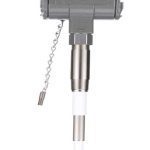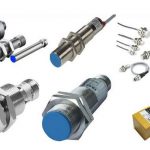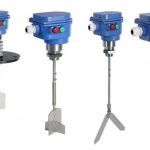Table of Contents
Filter Regulator Lubricator combines a filter, regulator, and lubricator into one component to keep pneumatic systems in optimal working condition. This is also called as FRL or FLR. Since air from the compressor contains dust from the ambient atmosphere, condensed water, rust and dirt. These are undesired by-products of compressed and transmitted air. For the proper operation of air controlled devices such as piston cylinder, pneumatic supply must be cleaned and lubricated. The purpose is filled by Filter Regulator Lubricator (FLR o FRL) assembly. A simple overview of using FRL is shown below-
As we see, An FRL combines a filter, regulator, and lubricator into one component to keep pneumatic systems in optimal working condition. A figure showing FRL is as follows-
FRL components-
An FRL is comprised of three primary components:
- Air line filter- To clean and filter solid particles (dust, dirt, rust) and separates liquids (water, oil)
- Pressure regulator- To reduce and control air pressure supply
- Lubricator- To add controlled quantities of tool oil into a compressed air system to reduce the friction of moving components
Right Pneumatic lubricator selection
Lubricators reduce the internal friction in tools or equipment by releasing a controlled mist of oil into the compressed air. Knowing the pneumatic component’s need for lubrication will determine the oil type and drip rate. The drip rate is how much oil is released downstream. There are two types of lubricators.
- Oil-fog supplies 100% of the oil seen in the sight glass downstream as a large droplet. It is designed for short distances and typically just for one component requiring heavy lubrication.
- Micro-fog supplies roughly 10% of the oil seen in the sight glass downstream as a mist (< 2 µm). It is designed for long distances and multiple components.
Lubricators will require maintenance to re-fill the oil reservoir when it becomes low and can be monitored through the sight glass or a window located on the housing. Lubricators also require a pressure differential to make the oil drip, therefore, they create a pressure drop at the outlet. This needs to be taken into account to ensure the proper pressure reaches the end component. This means that air will not be lubricated if the system is off, which allows for no oil waste. It should be noted that many pneumatic components are self-lubricating and don’t require any additional lubrication.
Read Also:-
Valve Positioner
I/P Converter (Electro-pneumatic Converter)
Related Search:-

Capacitive level switch
Capacitive level switch





Proximity Switch
Proximity Switch





Level Switches working
Level Switches working





Paddle level switch working principle
Paddle level switch working principle





Pressure switch calibration
Pressure switch calibration




